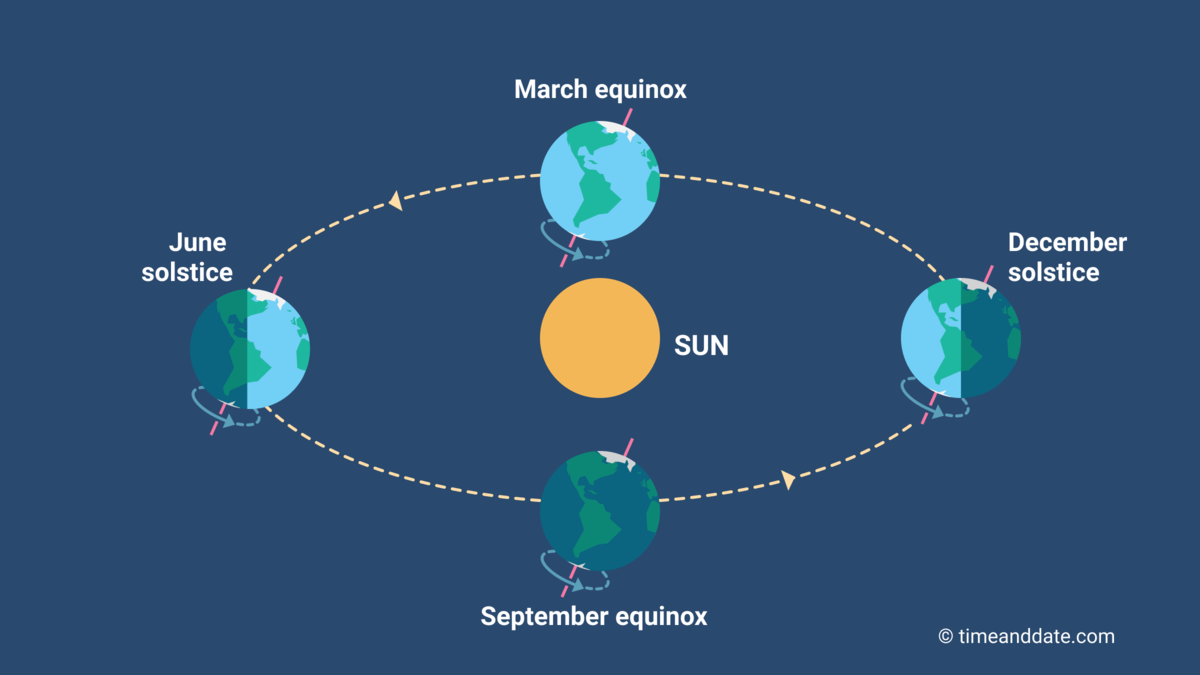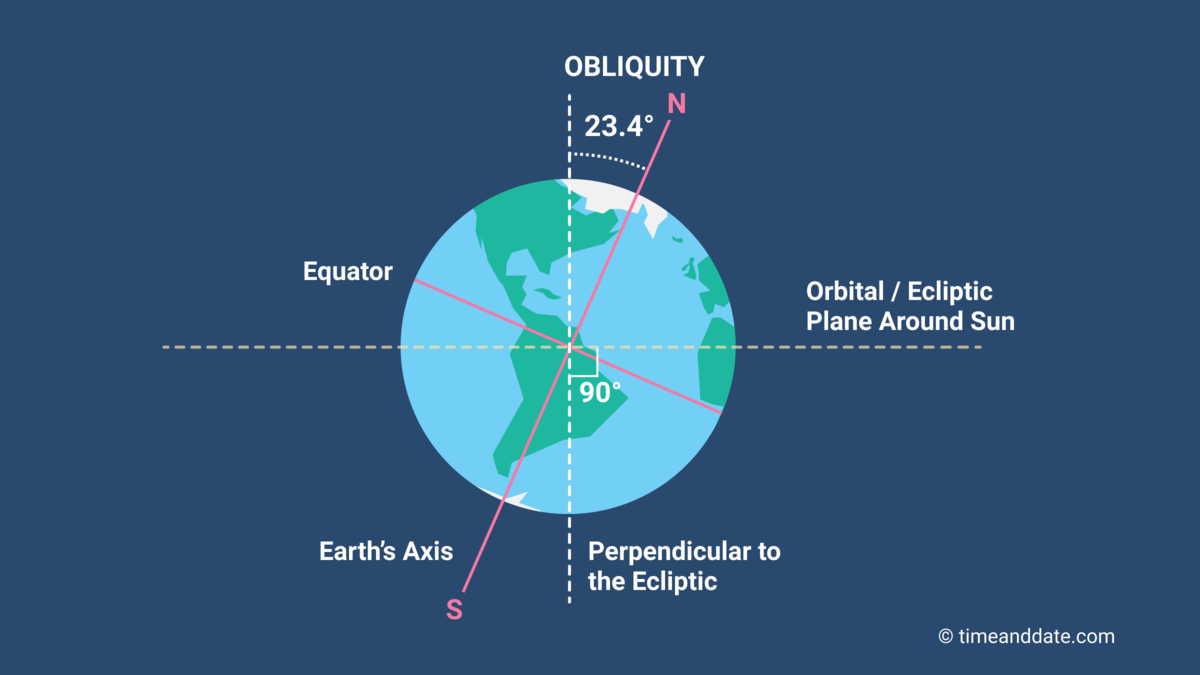What Causes Seasons on Earth?
Seasons happen because Earth's axis is tilted at an angle of about 23.4 degrees and different parts of Earth receive more solar energy than others.


Earth's orbit around the Sun is elliptical. Seasons are caused by Earth's axial tilt and temperatures and nature's processes are affected.
©timeanddate.com
Because of Earth's axial tilt (obliquity), our planet orbits the Sun on a slant which means different areas of Earth point toward or away from the Sun at different times of the year.
Astronomical terms & definitions
Around the June solstice, the North Pole is tilted toward the Sun and the Northern Hemisphere gets more of the Sun's direct rays. This is why June, July and August are summer months in the Northern Hemisphere.
What are equinoxes and solstices?
Opposite Seasons
At the same time, the Southern Hemisphere points away from the Sun, creating winter during the months of June, July and August. Summer in the Southern Hemisphere is in December, January, and February, when the South Pole is tilted toward the Sun and the Northern Hemisphere is tilted away.
Meteorological vs. astronomical seasons


Earth's axis is the imaginary red line.
timeanddate.com
Axis Tilts the Same Way
The direction of Earth's tilt nearly doesn't change—the two hemispheres point toward the same position in space through the entire year. What does change, as Earth revolves around the Sun, is the position of the hemispheres in relation to the Sun—the Northern Hemisphere points toward the Sun during the northern summer and away from the Sun during the northern winter.
Elliptical Path Around the Sun
Earth's path around the Sun is not circular, nor is the Sun situated at the center of this path. Instead, Earth's orbit is elliptical, with the Sun closer to one end of the orbital path than the other. This means that Earth’s distance from the Sun varies throughout the year.
The moments when 99% of people see sunlight
Distance Does Not Cause Seasons

Spring, summer, fall, and winter.
©iStockphoto.com/Smitt
It is a common misconception that seasons occur because of Earth's elliptical orbit around the Sun, with winter occurring when Earth is farthest away from the Sun, and summer when it is closest to it.
However, our planet's distance from the Sun has little effect on the onset of seasons. In fact, Earth is closest to the Sun, or at its Perihelion, around the Northern Hemisphere's winter solstice, while it is farthest away from the Sun, or at its Aphelion, around the north's summer solstice.
Little Difference
While the variation of Earth’s distance from the Sun isn’t very large, our planet receives more solar energy when it is closest to the Sun during Southern Hemisphere's summer. However, because there are relatively few landmasses south of the equator and oceans take more time to heat up, the temperature difference between the northern and southern summers is very small.